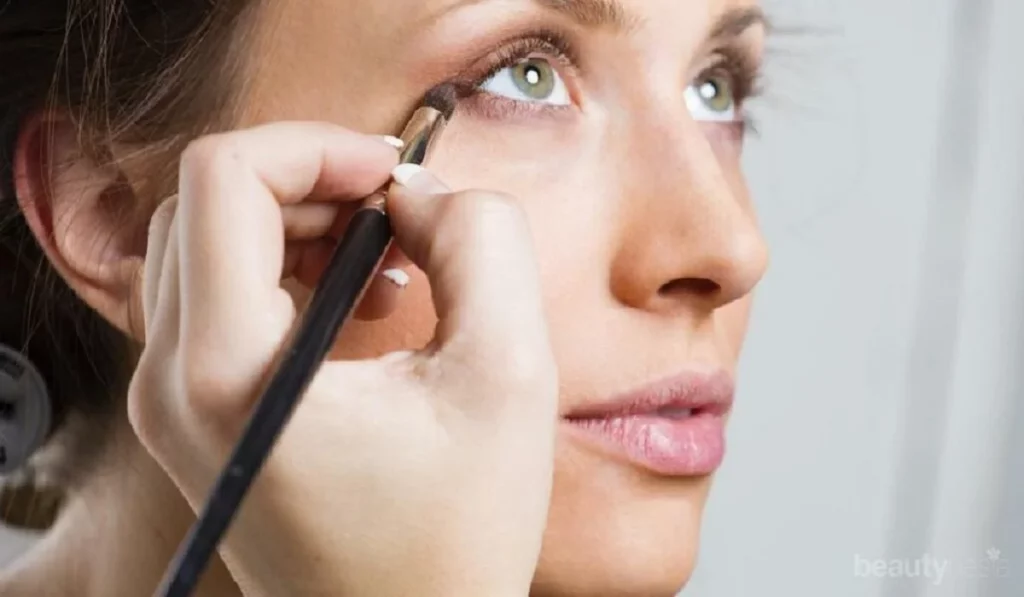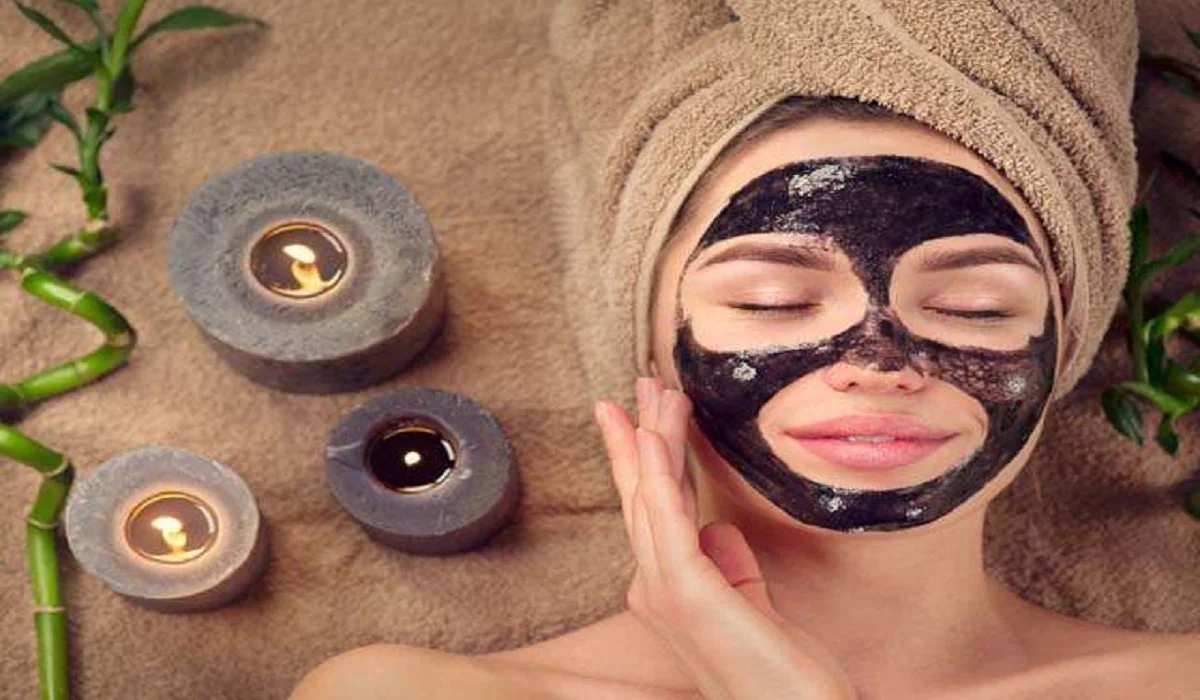Transforming eyeshadow into eyeliner isn’t just a clever beauty hack; it’s an art form that unlocks a treasure trove of creative possibilities. With the vast spectrum of eyeshadow colors and textures at your disposal, you can craft eyeliner looks that range from subtly sophisticated to boldly avant-garde. This detailed guide takes you through the process step by step, ensuring that even beginners can master the technique and add a personalized touch to their makeup repertoire.

The Foundation: Understanding the Essentials
To embark on this creative journey, you’ll need to gather a few essential tools and products. The right tools not only facilitate ease of application but also influence the precision and longevity of your eyeliner.
- Flat, Angled Eyeliner Brush: A high-quality, flat, angled brush offers control and precision, allowing you to draw sharp lines and perfect wings.
- Highly Pigmented Eyeshadow: Choose eyeshadows known for their rich pigmentation and smooth application. Both matte and shimmer finishes can be used, depending on the desired effect.
- Mixing Medium: A mixing medium enhances the durability and intensity of eyeshadow when used as an eyeliner. For a waterproof finish, opt for a medium specifically designed for eye makeup.
- A Clean Palette or Mixing Surface: This will be used to blend your eyeshadow with the mixing medium or water, creating a creamy, eyeliner-like consistency.
- A Drop of Water (Alternative to Mixing Medium): In the absence of a mixing medium, plain water can suffice, though it may not offer the same longevity or intensity.
Choosing Your Eyeshadow: The Color Palette
Your choice of eyeshadow color can dramatically affect your overall look. Consider the occasion, your outfit, and the statement you wish to make. From the deep, sultry tones of midnight blue and rich burgundy to the soft, subtle hues of dusty rose and taupe, each color offers a unique vibe. Additionally, experimenting with finishes can add dimension to your look—metallics for a pop of shine, mattes for depth, and satins for a soft glow.

Preparing the Eyeliner Mixture: A Step-by-Step Guide
- Preparation: Start with a clean, dry mixing palette. If you’re using a mixing medium, place a small drop onto the palette. For those opting for water, have a container nearby to moisten the brush as needed.
- Mixing: Dip your angled brush into the chosen eyeshadow, picking up a generous amount of product. Then, mix it with the medium or water on your palette until you achieve a smooth, creamy consistency akin to traditional liquid eyeliner. The goal is to create a blend that’s neither too wet nor too dry, offering smooth application and vibrant color payoff.
- Application Techniques for Diverse Looks:
- For a Defined Cat Eye: Start at the inner corner of the eye, tracing along the lash line with the angled brush. Extend beyond the outer corner in a swift, upward flick to create the iconic wing. The key is to keep the line as close to the lashes as possible for a seamless look.
- For a Soft, Smudged Effect: After drawing your line, quickly use a small smudging brush to gently blur the edges before the mixture sets. This technique is perfect for creating a smoky eye look that’s effortlessly chic.
- For a Graphic Eyeliner Look: Use the creamy mixture to draw bold, geometric shapes or intricate designs around the eye area. This approach requires a steady hand and a bit of creativity.
Setting and Perfecting Your Work
To ensure your newly applied eyeshadow eyeliner remains pristine throughout the day, consider setting it with a matching powder eyeshadow. Using a small, flat brush, gently press the powder onto the wet line, which will help lock the color in place and prevent smudging. Additionally, cleaning up any mistakes or sharpening your lines with a pointed cotton swab dipped in makeup remover can perfect your look.
Advanced Tips for Eye-Catching Results
- Layering for Intensity: For deeper color saturation or to achieve a multi-dimensional effect, consider applying a second layer of the eyeshadow mixture once the first has dried.
- Custom Color Blending: Don’t be afraid to mix different eyeshadow shades on your palette to create a custom color that perfectly matches your vision or ensemble.
- Hygiene and Care: Always ensure your brushes are clean before use to prevent eye infections. Regular washing with gentle soap and water will keep them in top condition.
Unleashing Your Creativity
Using eyeshadow as eyeliner not only diversifies your makeup options but also encourages creative expression. Whether you’re aiming for a subtle enhancement or a dramatic statement, the versatility of eyeshadows offers endless possibilities to explore. Remember, makeup is an art, and you are the artist. With practice, patience, and experimentation, you can master this technique and elevate your makeup game to new heights.
- Can any eyeshadow texture be used as eyeliner? Yes, you can use various eyeshadow textures as eyeliner, including matte, shimmer, and metallic finishes. However, the texture can affect the application and final look. Matte eyeshadows provide a more traditional eyeliner appearance, while shimmer and metallic shadows offer a luminous finish that can brighten the eyes.
- How do I prevent eyeshadow eyeliner from smudging throughout the day? To prevent smudging, ensure the eyeshadow mixture has the right consistency and isn’t too wet. Setting your eyeliner with a matching powder eyeshadow or a clear setting spray can also improve its longevity. Additionally, using a primer before application can create a more adhesive base for the eyeshadow.
- Is it safe to use eyeshadow as eyeliner on the waterline? Generally, it’s safer to avoid using eyeshadow on the waterline, especially if you have sensitive eyes or are using a product not specifically formulated for this area. The fine particles from eyeshadows can irritate the eyes. If you desire to line your waterline, opt for products explicitly safe for waterline use.
- How do I choose the best eyeshadow color to use as eyeliner? The best eyeshadow color for eyeliner depends on your desired look and eye color. For a natural look, choose eyeshadows close to your eyeliner shade. For a pop of color, opt for contrasting shades that enhance your eye color, such as copper for blue eyes, purple for green eyes, and blue for brown eyes.
- Can I use this technique for creating winged eyeliner? Absolutely! Using eyeshadow as eyeliner is excellent for creating a winged look. The key is to use a flat, angled brush for precise application. Start thin at the inner corner and thicken the line as you extend outward, flicking the brush up and out at the corner of your eye to create the wing.
- What can I do if the eyeshadow eyeliner looks too faint? If the eyeliner appears too faint, you can build up the intensity by applying a second layer once the first has dried. Ensure your eyeshadow mixture is pigmented enough, and consider using a base or primer to enhance the color payoff.
- How can I remove eyeshadow eyeliner effectively? Eyeshadow eyeliner can be removed with your regular makeup remover or micellar water. If you’ve used a waterproof mixing medium, you may need an oil-based remover. Gently sweep a cotton pad soaked in remover over the eyelids until the makeup dissolves.
- Can mixing mediums cause irritation? While mixing mediums are formulated to be safe for use around the eyes, sensitivity varies from person to person. It’s always best to conduct a patch test before using a new product near your eyes, especially if you have sensitive skin. Opt for hypoallergenic or ophthalmologist-tested mediums to minimize the risk of irritation.
- How do I fix mistakes or sharpen the edges of my eyeshadow eyeliner? To fix mistakes or sharpen your eyeliner edges, dip a pointed cotton swab in makeup remover and gently erase or refine the areas as needed. This method allows for precise adjustments without disturbing the rest of your makeup.
- Are there any alternatives to water or mixing mediums for creating the eyeliner mixture? Aside from water and commercial mixing mediums, some people use setting sprays to moisten the brush before dipping it into the eyeshadow. This can offer improved longevity and set the eyeliner once applied, but it’s essential to ensure the setting spray is safe for use around the eyes.








